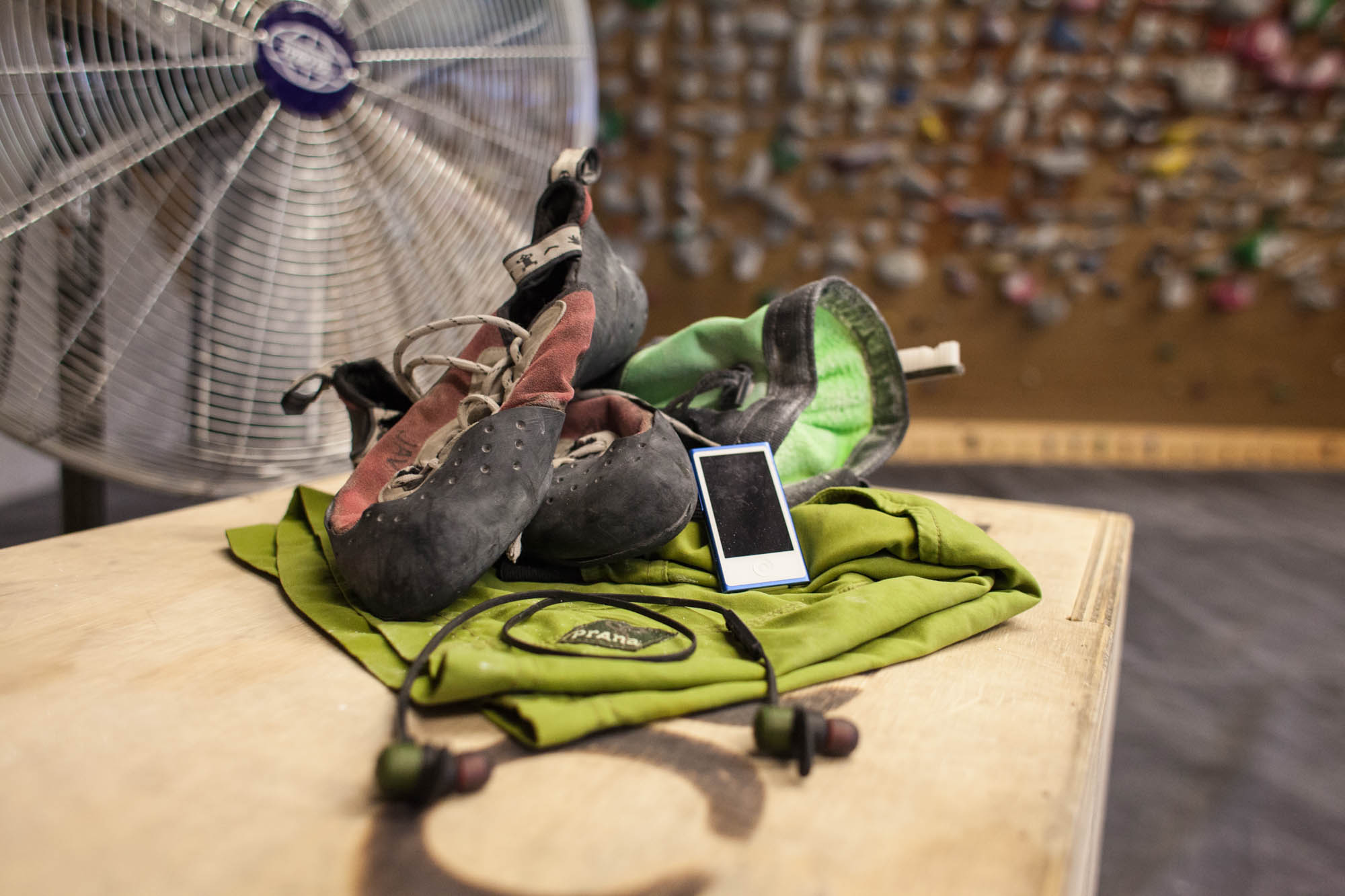by Jon Vickers /
What is ARCing?
ARCing (Aerobic Restoration and Capillarity) seems to be either loved or hated. Some claim it does nothing and others consider it a key part of their training regiment. Whether or not you believe in all of ARCing’s merits, it is undeniable that most climbers can benefit from this types of exercise in some way. It is especially beneficial for those who have only been climbing for a couple years and can learn a lot by spending more time on easy terrain. This is an important part of building confidence through experimentation with various climbing movements .
Despite its many technical and mental benefits, ARCing is a training approach intended to develop aerobic endurance by continuously climbing. It is possible to encouraging vascular development by maintaining a consistent flow of blood through the capillaries which forces them to stay completely open. Over time, this steady blood pressure on the capillary walls will stimulate the growth of new capillaries. This improves the capillary density of your forearms so you can get more oxygen and take away more waste products from your muscles, increasing your ability to stave off the pump.
The goal is to climb for 20 to 40 minutes without surpassing your “anaerobic threshold” (see figure 1). The result is a greater level of aerobic endurance and the ability to climb more moves before needing to call upon your anaerobic endurance or ‘power endurance.’ While a heart rate monitor can be used to help identify the anaerobic threshold, we have provided some ways to determine the correct intensity by feel in the list below (figure 2.).
(figure 1.)
| Climbing Terms | Heart Rate Zone | Workouts |
| Endurance | Aerobic | ARCing |
| —————————————- Aerobic/Anaerobic Threshold —————————————- | ||
| Power Endurance | Anaerobic | 4x4s, Circuits, Linked Boulders |
| Power | Anaerobic | Campusing, Limit Bouldering |
Beyond the physiological improvements that come from ARCing, climbing at a low intensity for a long time is extremely beneficial in regards to technique and confidence. These longer sessions provide a climber the best opportunity to commit efficient movements to muscle memory and develop tactics for resting and recovery. An ARCing session is also one of the most time effective routines in that very little of your time is spent resting and almost all of your time is spent climbing. For most climbers, whether a beginner or advanced climber, the technical gains and confidence gained from ARCing can be just as beneficial as increased physical endurance.
Learn more about ARCing in this Momentum Blog interview with staff member Brendan Nicholson.
What does ARCing feel like? (figure 2.)
- Arms burn slightly, but you are not pumped.
- You should never feel like you are about to fall off.
- You will most likely be sweating lightly.
- Your heart rate is steady.
- Finish feeling very warmed up and slightly depleted, but able to get back on the wall within 5 minutes.
Tips for ARCing at Momentum.
The trick to successful ARCing is knowing when and where you can ARC without interruption or hindering other climbers. This can be very difficult, especially if you work during the calmer times at the gym. For the most part, you are looking for terrain with a lot of available holds for both your hands and your feet. While the angle of terrain and size of holds desired will vary depending on your ability, you should strive to have comfortable grips. Usually it helps to have options for resting positions or larger holds for recovery when you first start ARCing. You should utilize and learn from these resting position, but do not use them as a crutch. You should strive to continually move during the workout.
In regards to your own comfort while ARCing make sure to have everything ready for a long session of sweating and trying hard. Dress appropriately with shorts and short sleeves. Even if you are cold when you start, you should warm up quick so make sure to dress appropriately to sweat. If you are ARCing on one surface it may be possible to use a fan to stay cool too. If the long monotonous session is more of a concern, consider listening to music.
Below are some areas suitable for ARCing at each of our locations. Make sure to try times that are not busy and always communicate with other climbers. Not every time and place is appropriate for this kind of workout.
Millcreek’s ARCable Terrain:
- Kids Canyon (Easy): A great place for starting out, but not allowed when it is being used by Youth Programs and Daycare.
- Bottom of Route Walls (Easy to Medium): This can make for some great terrain, but it is only allowed when the gym is quiet. The best chance to get a nearly empty gym is late morning. Climbers must stay at a safe height at all times
- Adjustable System Wall (Medium to Hard): The great thing about the adjustable system wall is the fact that intensity can easily be controlled. However, even the least amount of angle is still pretty tough.
- The Woody (Hard): The Woody is hard to ARC on but if you milk the rest on the right arete and climbing on the top jugs some, it can make for a good session. Ween yourself off the rest stances and jugs over time.
Sandy’s ARCable Terrain:
- Kids Rainbow Wall (Easy): This is a great wall for starting out with ARCing, but is off limits when it is being used by Youth Programs and Daycare.
- Bottom of Island Routes (Easy): This can make for some great terrain, but it is only allowed when the gym is dead and climbers must stay at a safe height at all times. The best chance to get a nearly empty gym is late morning.
- Back Routes Wall (Medium): This can make for some great terrain, but it is only allowed when the gym is dead and climbers must stay at a safe height at all times. The best chance to get a nearly empty gym is late morning.
- Bouldering Area (Medium to Hard): This is only appropriate when the gym is very slow. Make sure to stay in areas where others are not climbing and communicate with climbers so you don’t dominate any one area.
Lehi’s ARCable Terrain:
- Kids Wall Upstairs (Easy): This is a great wall for starting out with ARCing, but is off limits when it is being used by Youth Programs and Daycare.
- The Boulder (Easy): This is only appropriate when the gym is very slow. Make sure to stay in areas where others are not climbing and communicate with climbers so you don’t dominate any one area.
- Adjustable System Wall (Medium to Hard): The great thing about the adjustable system wall is the fact that intensity can easily be controlled. However, even the least amount of angle is still pretty tough.
- The Woody (Hard): The Woody is hard to ARC on at first, but if you milk the rest on the aretes and climbing on the top jugs it can make for a good session. Ween yourself off the rest stances and jugs over time.
Drills and Technical Practice while ARCing
- Practice matching hands on various holds especially small ones.
- Practice switching feet on holds especially small foot jibs.
- Climb quickly with quick dynamic movements.
- Climb slow and with perfect control.
- Practice resting on marginal resting holds.
- Practice climbing on all hold types with open hand position
- Practice finding novel rest positions utilizing the lower body as much as possible.
Our Next Article >> “Volume Phase: Continuous Intensity Repetitions”
Works Cited and Further Reading:
The Self Coached Climber by Dan Hague and Douglas Hunter
The Rock Climber’s Training Manual by Michael and Mark Anderson
Training for Climbing by Eric Horst



The speed wall at Millcreek could be great for ARC’ing. Auto belays are already set up and it’s the perfect steepness. If there were some flow-y routes with older polished holds and people could sign up to reserve the wall for 20 or 30 mins at a time. It would be sweet.